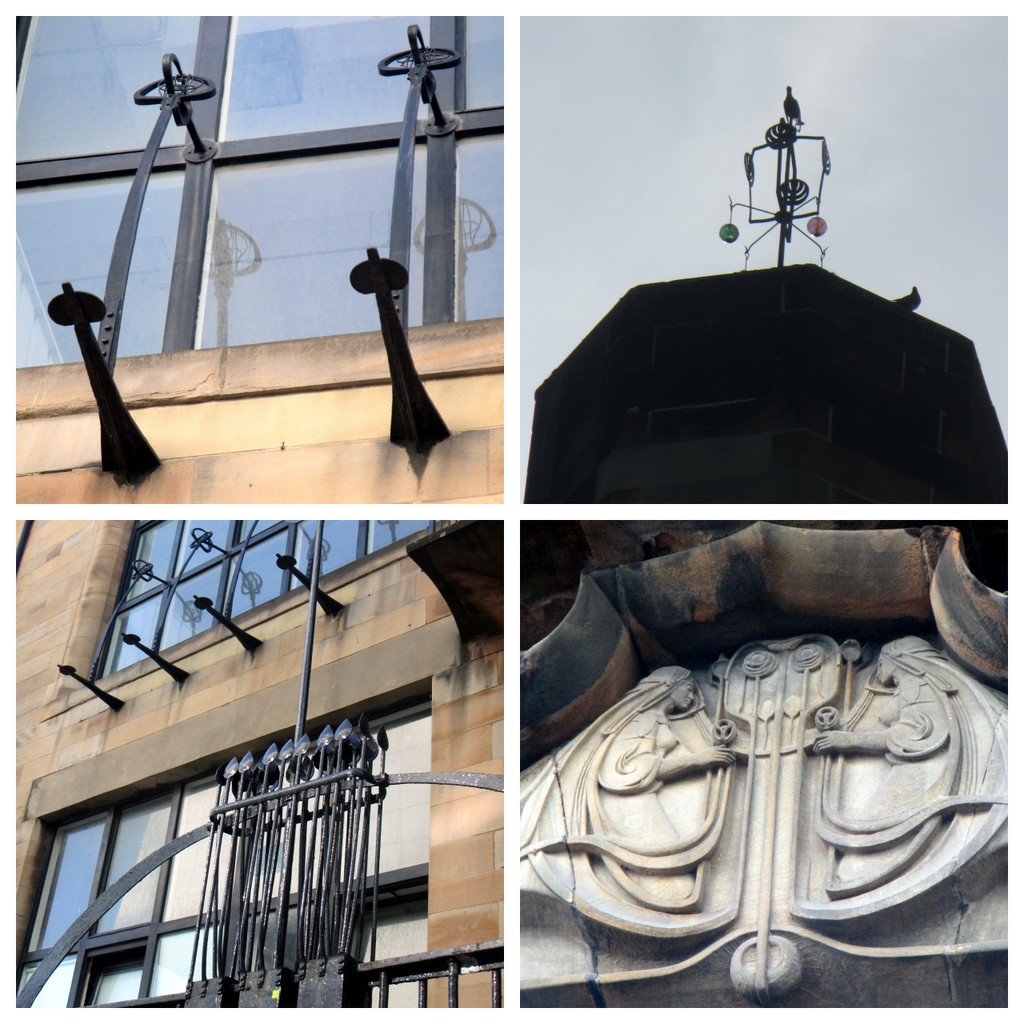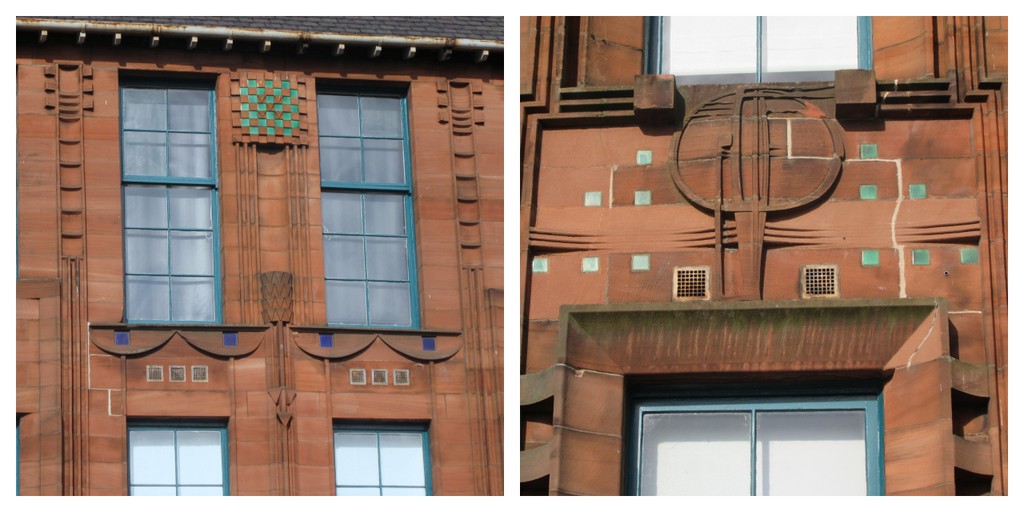On our short visit to Glasgow a couple of weeks ago we made sure to seek out work by Glasgow’s most famous architect and designer, Charles Rennie Mackintosh. His furniture and interior designs are featured in any general book on the Art Nouveau style – his high backed, very uncomfortable-looking chairs are icons. This sample of what we saw is arranged more or less in chronological order.
Mackintosh was born in 1868 (a year younger than my grandmother – helps me). When he was 25 and working for an established architectural firm he designed an addition to the Glasgow Arts Club. I learned that the Club offers free tours and I signed us up for one .
The gallery space he designed has recently been restored at great expense. A painting exhibition was being installed.
Mackintosh stenciled a frieze around the gallery but it was painted out almost immediately. Recreating the frieze took a lot of detective work; surprise, it was Scottish thistles.
Other details that appealed to me were the “GAC” monogram in the wooden fresh air vents and the elongated lady on the brass door push plates.
Also around 1893, Mackintosh was part of the team working on the towering Glasgow Herald Building. The building is now part of an arts centre and we climbed to the top of that tower to take the view.
It was front page news around the world when the Glasgow School of Art caught fire in 2014. Mackintosh designed the building in several stages between 1896 and 1909. The building is closed while its future form is determined. I loved the barrier that blocks the front steps.
Lots of exterior details to appreciate.
Each facade of the building is different . The east end shows Mackintosh’s fascination with Scottish medieval architecture. The slope of the street is really that dramatic.
Mackintosh designed a series of tearooms with striking interiors with his signature furniture. We saw elements of demolished tea rooms in the Kelvingrove Museum. These coloured glass panels were in a partition wall.
Large murals must have woken up Victorian hipster tea drinkers.
The Scotland Street School was a major Mackintosh design I did not know. When built in 1904 it served a vibrant working class community. Now it is a school museum close to an off ramp for a motorway, with not a house in sight.
Two glass-walled stair towers are the dominant features of the front facade.
Children must have been thrilled and chilled looking down from the landings of the stair cases.
The back of the build is very plain, then you notice little clumps of decoration.
The city was at a real low point as industry closed and terrible slums remained terrible for generations. One of the strategies behind their brilliant recovery was embracing and promoting the arts. It was particularly interesting to see how key Mackintosh is to the narrative that Glasgow tells about itself.
Post Script
- October was Mackintosh Month with various programs including “take a Mackselfie.” A helpful, little Mackintosh moustache-on-a-stick was provided. Of course I obliged (next to a Mackintosh chair). I’ve included his photo to show our uncanny resemblance.
- On a trip like this I always wonder “could we be doing this at home?” We don’t have world famous architecture but we could be doing a better job telling the story of what we have. Victorian Halifax or Georgian Halifax architecture tours would be a start.





















